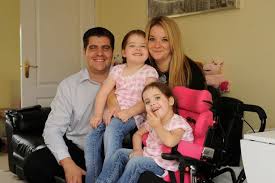 An ABLE Act account can be an important part of your estate and special needs plan, including special needs trusts.
An ABLE Act account can be an important part of your estate and special needs plan, including special needs trusts.
One of the articulated purposes of the ABLE Act is “to provide secure funding for disability-related expenses on behalf of designated beneficiaries with disabilities that will supplement, but not supplant, benefits” otherwise available to qualified persons, whether through private, employment, or public programs or sources.
Who is an eligible beneficiary?
To be eligible to be the beneficiary of an ABLE account, an individual must have a ‘qualifying disability’ occurring before the age of twenty-six, and either by receiving SSI or SSD, the cash benefit program for persons with disabilities.
However, remarkably, the law also allows a disability to be ‘certified’ if an individual is not receiving SSI or SSD – either because
- financial resources are greater than SSI levels
- or a couple are married and the disabled person is not receiving SSI because of marriage
- or where an individual does not qualify for SSI and there is not a sufficient work history to qualify for SSD.
The certification of disability is approved by a physician and ‘filed’ as part of the account opening. The medical certification requires the person to meet the same medical standard required as persons who apply for and receive SSI or SSD, specifically:
- the individual has a medically determinable physical or mental impairment which results in marked and severe functional limitations, and the impairment can be expected to result in death,
- or the impairment has lasted or can be expected to last for a continuous period of not less than 12 months,
- or the person is blind.
So, if an individual is certified as disabled, even though he or she may be working and not receiving Medicaid or SSI or SSD, an ABLE account can still be opened.
Is the disabled person’s privacy protected?
Yes. To preserve privacy, no written diagnosis is required to be placed on file when opening the ABLE account, and ABLE programs will not need to receive, retain, or evaluate detailed medical records.
Instead, certified disabled beneficiaries can open an ABLE account by certifying, under penalties of perjury, that they meet the qualification standards. The disabled beneficiary or their parent or guardian must also certify the receipt of a physician’s signed diagnosis and agree to retain that diagnosis and provide it upon request to the ABLE program or the IRS.
Please note that an individual who is disabled before age 22, and is receiving childhood disability benefits (CDB) as a derivative benefit based upon a parent’s death or disability, or is receiving disabled widow’s or widower’s benefits based upon becoming disabled or blind before age 26, may also be an eligible beneficiary of an ABLE account without ‘certification’.
*** Attorney Advertisement ***


 New York State Medicaid administers a comprehensive community home care program called Managed Long Term Care (MLTC) on Long Island, and New York City and its boroughs. Long Island is well served by MLTC programs, but there are issues you need to be aware of – that I will discuss in my next two blogs.
New York State Medicaid administers a comprehensive community home care program called Managed Long Term Care (MLTC) on Long Island, and New York City and its boroughs. Long Island is well served by MLTC programs, but there are issues you need to be aware of – that I will discuss in my next two blogs.




You must be logged in to post a comment.